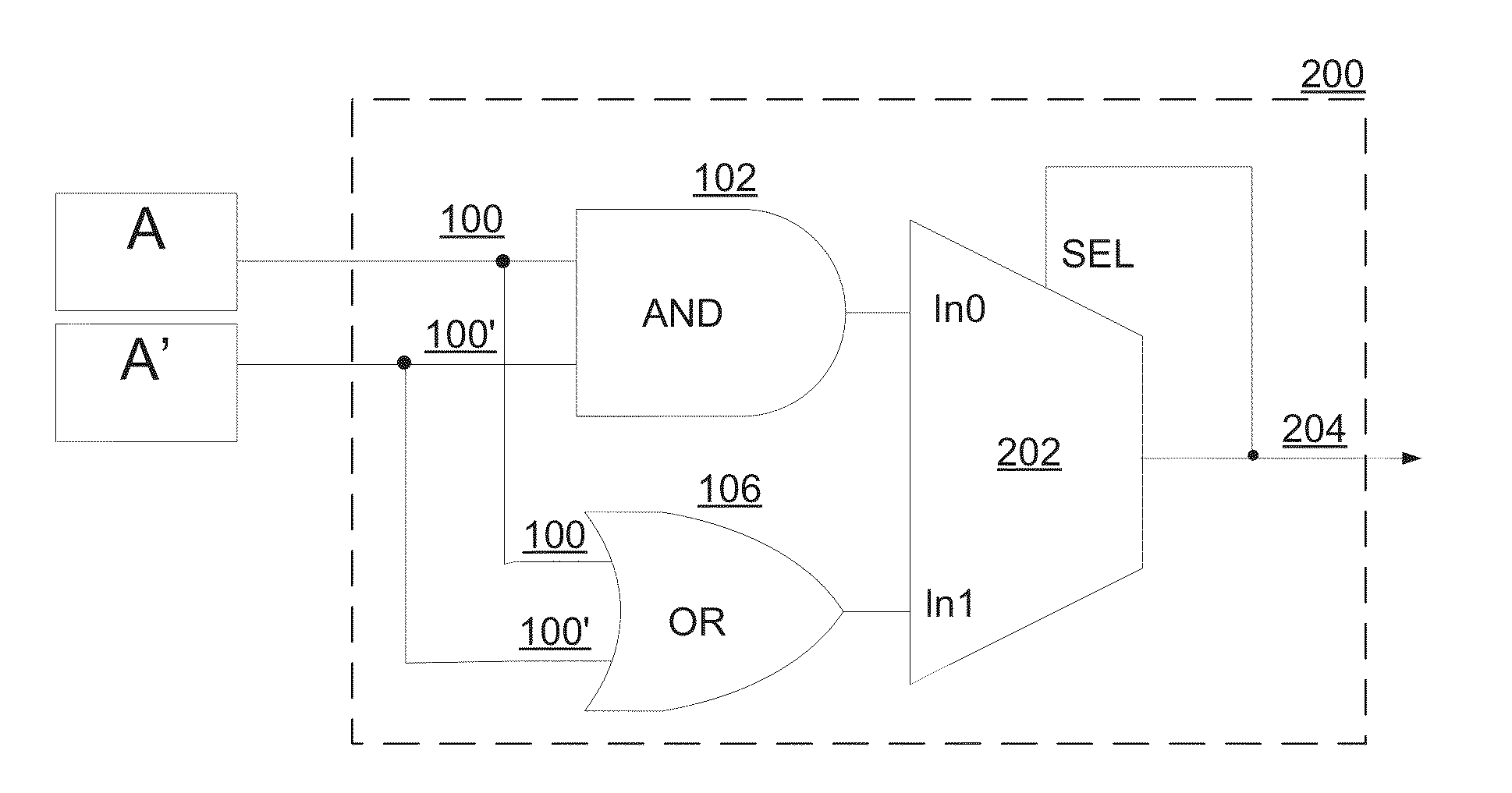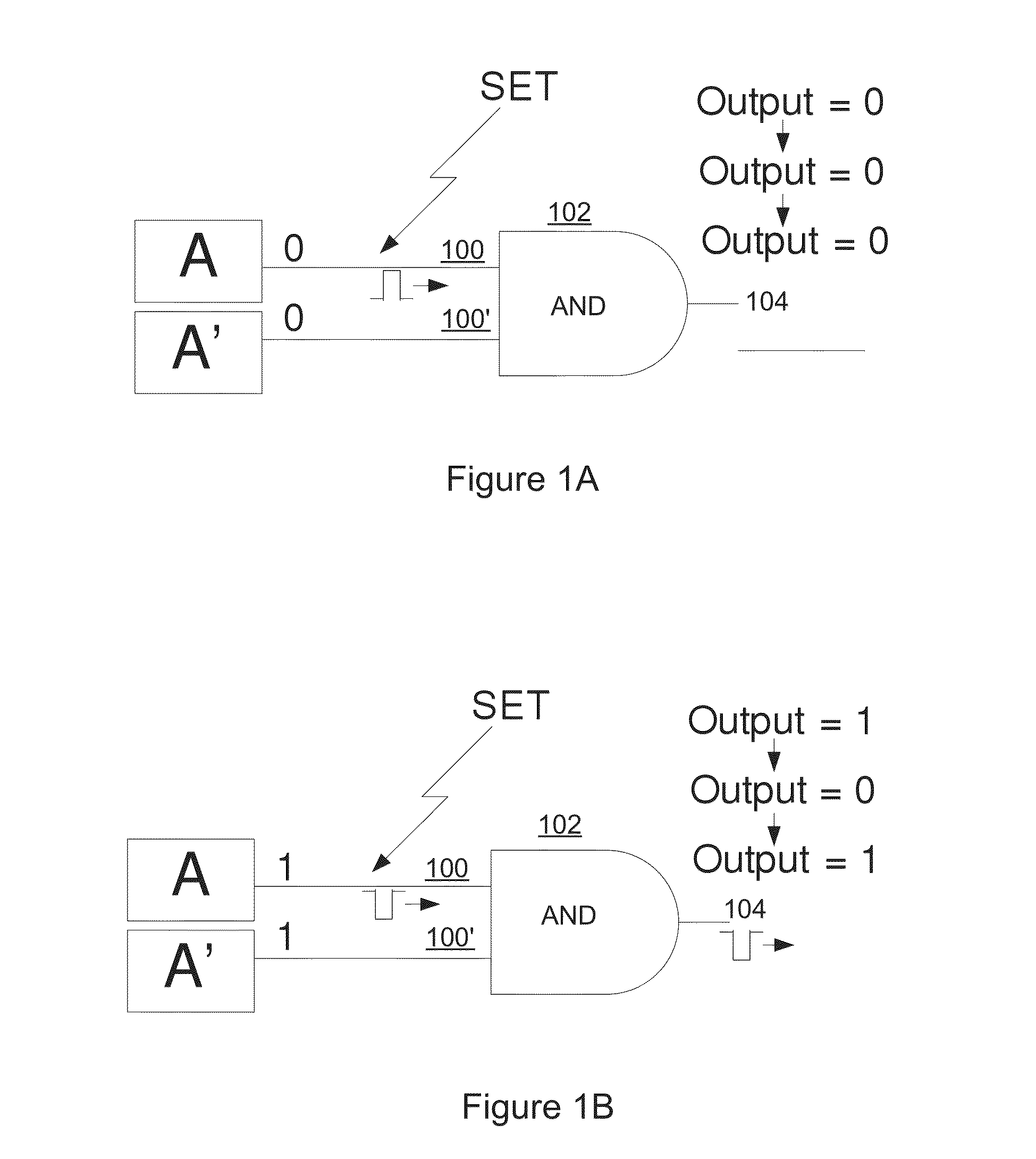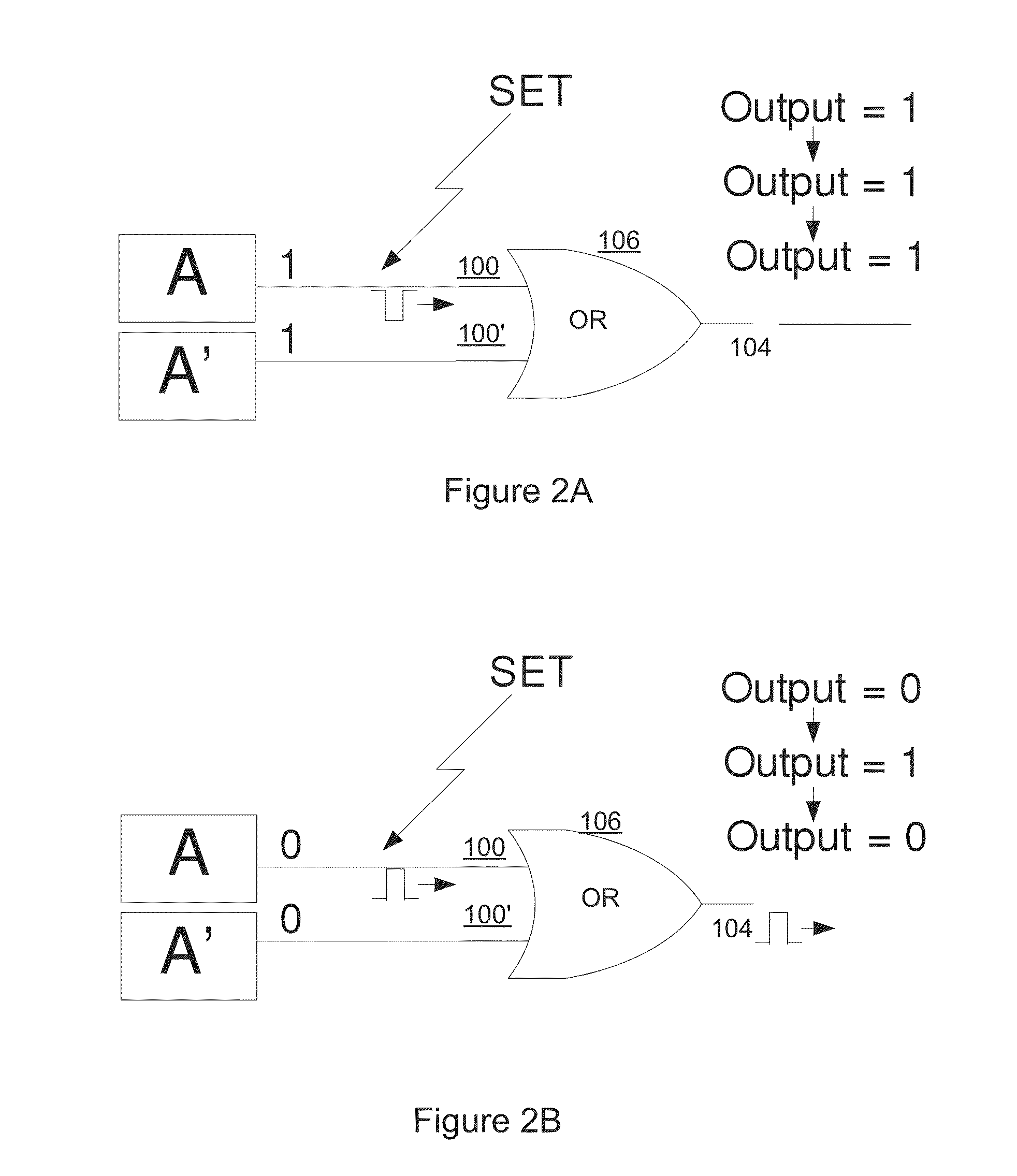Method and circuit structure for suppressing single event transients or glitches in digital electronic circuits
a single event transient or glitch technology, applied in the field of single event transient or glitch suppressing in digital electronic circuits, can solve the problems of general sensitive to single event effects, affecting the state of the circuit, and affecting the effect of the circuit structure,
- Summary
- Abstract
- Description
- Claims
- Application Information
AI Technical Summary
Problems solved by technology
Method used
Image
Examples
Embodiment Construction
[0089]For a single event transient (SET) to result in a single event upset (SEU) in a digital electronic circuit such as a sequential circuit, three conditions have to be satisfied: (1) an active path must exist between the afflicted node and the output of the circuit; (2) the pulse must be wide enough to avoid inertial delay filtration through subsequent gates and survive electrical attenuation along the active path; and (3) the pulse should arrive within the setup and hold time of a latch element, such as a flip-flop, to be captured and cause a soft fault.
[0090]A sequential circuit operates by transitioning from one state to the next, generating different output signals. The part of a sequential circuit that is responsible for determining the next state is called the next-state-logic circuit, which is a combinational circuit. Based on the current state of the system (the state memory flip-flops) and any input signals, the next-state-logic combinational circuit will determine the n...
PUM
 Login to View More
Login to View More Abstract
Description
Claims
Application Information
 Login to View More
Login to View More - R&D
- Intellectual Property
- Life Sciences
- Materials
- Tech Scout
- Unparalleled Data Quality
- Higher Quality Content
- 60% Fewer Hallucinations
Browse by: Latest US Patents, China's latest patents, Technical Efficacy Thesaurus, Application Domain, Technology Topic, Popular Technical Reports.
© 2025 PatSnap. All rights reserved.Legal|Privacy policy|Modern Slavery Act Transparency Statement|Sitemap|About US| Contact US: help@patsnap.com



